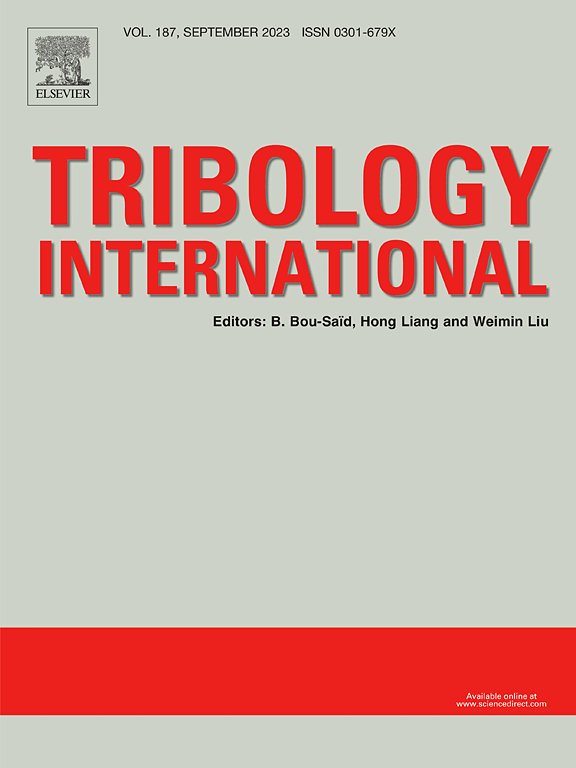Surface profile modelling of inclined-axis polishing based on the microscopic material removal behaviour of abrasive particles
IF 6.1
1区 工程技术
Q1 ENGINEERING, MECHANICAL
引用次数: 0
Abstract
As the final step in surface finishing, the polishing plays a critical role in determining the quality and precision of the target surface. Despite extensive research efforts centered on the Preston Equation for polishing processes, accurately capturing material removal at the zero-velocity point remains challenging. While some studies have explored material removal based on single abrasive particle behavior, these investigations have primarily focused on traditional flat polishing. There is a notable lack of research that examines material removal from the perspective of a single abrasive particle to predict polishing profiles in inclined-axis spherical polishing head applications. Therefore, this research establishes a surface profile model of inclined-axis fixed point polishing for spherical polishing head based on material removal of single abrasive particle. In which the abrasive particle sweep cross-section versus position relationships are considered, the abrasive particle movement trajectories are calculated, and multiple abrasive particle footprints overlapping strategy are set up. Polishing experiments were carried out, varying key parameters such as vertical feed depth, inclined angle, and dwell time. The outcomes reveal that the minimum error for predicting the cross-section maximum profile depth is only 6.25 %, and the contact profile is only 5.68 %, proves the precision of the model. In additions, the results also reveal that the best prediction condition for the model of vertical feed depth ≤ 0.2 mm, the inclined angle ≥ 15°, which is also the parameter condition for the formation of the approximate Gaussian profile during the experiment. The developed model is expected to not only enhance understanding of interaction mechanisms between abrasive particle- workpiece, including particle motion trajectories, but also offer practical guidance for optimizing polishing parameters and predicting surface outcomes in industrial manufacturing applications.
基于磨粒微观材料去除行为的倾斜轴抛光表面轮廓建模
作为表面加工的最后一步,抛光对目标表面的质量和精度起着至关重要的作用。尽管针对抛光过程的普雷斯顿方程进行了广泛的研究,但准确捕捉零速度点的材料去除仍然具有挑战性。虽然一些研究已经探索了基于单一磨料颗粒行为的材料去除,但这些研究主要集中在传统的平面抛光上。在斜轴球面抛光头应用中,从单个磨料颗粒的角度研究材料去除来预测抛光轮廓的研究明显缺乏。因此,本研究建立了基于单粒磨粒材料去除的球面抛光头斜轴定点抛光表面轮廓模型。考虑了磨粒扫描截面与位置的关系,计算了磨粒运动轨迹,建立了多磨粒足迹重叠策略。在不同的垂直进给深度、倾斜角度和停留时间等关键参数下进行了抛光实验。结果表明,预测截面最大轮廓深度的最小误差仅为6.25 %,预测接触轮廓深度的最小误差仅为5.68 %,证明了该模型的精度。此外,结果还表明,模型的最佳预测条件为垂直进给深度≤ 0.2 mm,倾斜角度≥ 15°,这也是实验过程中形成近似高斯剖面的参数条件。所建立的模型不仅可以增强对磨料颗粒-工件之间相互作用机制(包括颗粒运动轨迹)的理解,而且可以为优化抛光参数和预测工业制造应用中的表面结果提供实用指导。
本文章由计算机程序翻译,如有差异,请以英文原文为准。
求助全文
约1分钟内获得全文
求助全文
来源期刊

Tribology International
工程技术-工程:机械
CiteScore
10.10
自引率
16.10%
发文量
627
审稿时长
35 days
期刊介绍:
Tribology is the science of rubbing surfaces and contributes to every facet of our everyday life, from live cell friction to engine lubrication and seismology. As such tribology is truly multidisciplinary and this extraordinary breadth of scientific interest is reflected in the scope of Tribology International.
Tribology International seeks to publish original research papers of the highest scientific quality to provide an archival resource for scientists from all backgrounds. Written contributions are invited reporting experimental and modelling studies both in established areas of tribology and emerging fields. Scientific topics include the physics or chemistry of tribo-surfaces, bio-tribology, surface engineering and materials, contact mechanics, nano-tribology, lubricants and hydrodynamic lubrication.
 求助内容:
求助内容: 应助结果提醒方式:
应助结果提醒方式:


